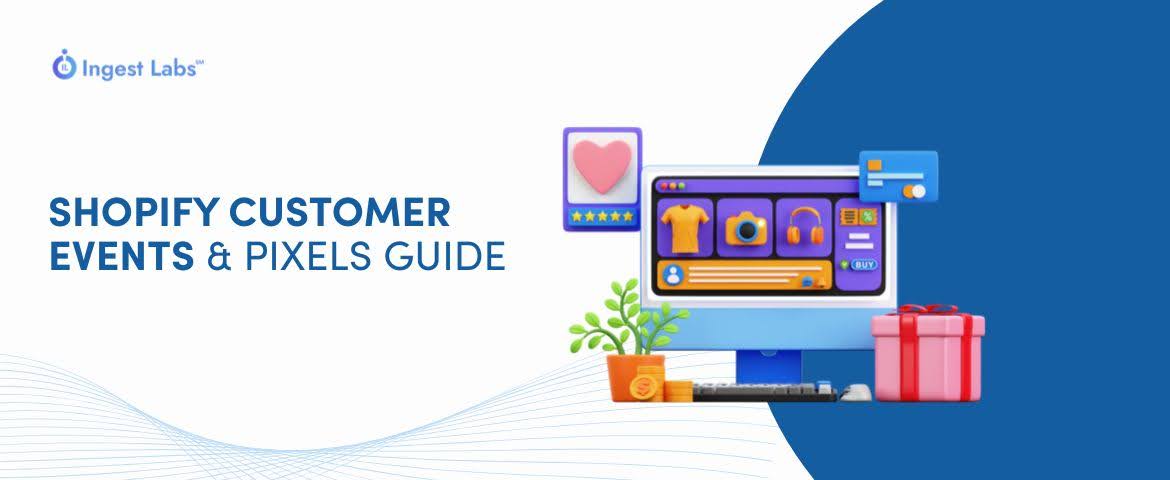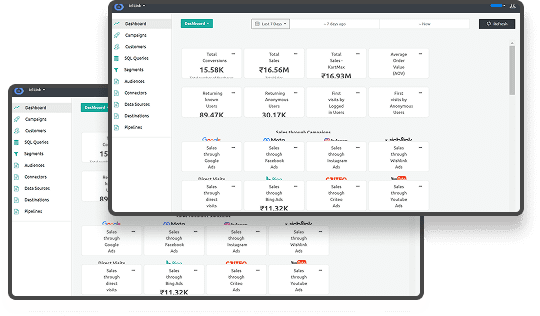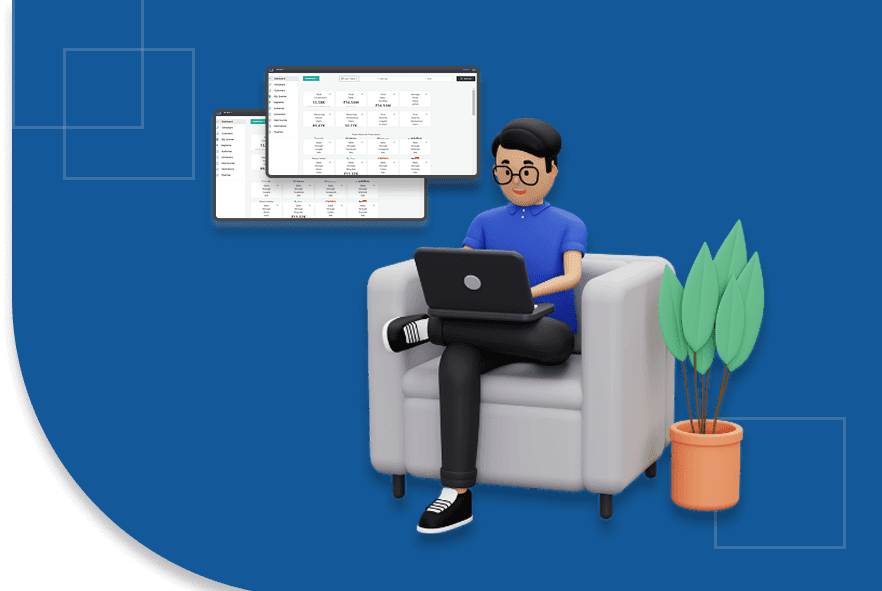Comprehensive Guide to Shopify Customer Events and Pixels
How confident are you in the accuracy of your customer data?
In the evolving digital commerce landscape, relying solely on third-party data is becoming increasingly unreliable. According to a Forbes report, 80% of consumers are more likely to purchase from brands that offer personalized experiences, highlighting the importance of accurate customer data in driving conversions.
However, with growing concerns over privacy, 71% of customers have switched brands due to trust issues, emphasizing the need for transparent data practices.
Shopify's Customer Events and Pixels provide a solution by enabling businesses to collect first-party data directly from their online stores. This approach improves data accuracy and aligns with privacy expectations, fostering trust and enhancing marketing effectiveness.
This blog delves into how implementing Shopify Customer Events and Pixels can refine your data collection practices, ensure compliance with privacy standards, and ultimately drive better marketing outcomes.
What are Shopify Customer Events?
Customer events are specific actions or behaviors customers take on your Shopify store. These events include adding items to the cart, initiating a checkout, completing a purchase, and interacting with your store’s navigation. By tracking these events, you can gain valuable insights into customer journeys, measure conversion rates, and tailor marketing efforts to encourage more sales.
Examples of Shopify Customer Events:
- Page Views: When a customer visits a product or collection page.
- Add to Cart: Customers add an item to their shopping cart.
- Initiate Checkout: When a customer begins the checkout process.
- Purchase Completion: When a customer completes a transaction.
- Add to Wishlist: When a customer adds a product to their wishlist.
By tracking these events, Shopify store owners can measure user engagement, optimize their store’s layout and marketing strategies, and improve overall customer satisfaction. Understanding what actions count as customer events gives you the groundwork.
Next, you’ll see how Shopify Pixels help capture and use this behavioral data more effectively.
Read more: Comprehensive Guide to Shopify Markets Features
What is a Shopify Pixel?
A Shopify Pixel is a snippet of code you embed on your Shopify store to track user interactions. Pixels help you capture detailed customer event data, essential for tracking conversions, optimizing ad targeting, and gathering insights for future marketing campaigns.
Now that you know what a Shopify Pixel does, it’s time to unpack how it gathers and shares customer data with your marketing platforms.
How Pixels Collect Data?
When customers interact with your store, the Shopify Pixel collects information on their actions, such as which pages they visit, what products they add to their cart, and which ads they engage with. This data is then sent to your advertising platform (such as Facebook or Google Ads), allowing you to retarget customers, track the effectiveness of ads, and measure ROI.
Types of Shopify Pixels
- Facebook Pixel: Helps track interactions from Facebook ads and retarget customers who have interacted with your store.
- Google Analytics Pixel: This tool provides deep insights into website traffic, user behavior, and conversion tracking for Google Ads campaigns.
- Custom Pixels: Shopify also allows integration with third-party pixels and analytics services to track specific events outside default integrations.
By utilizing Shopify Pixels, store owners can take full advantage of retargeting campaigns, personalized recommendations, and more accurate customer tracking. Each pixel serves a different purpose, so once you've chosen the ones you need, the next step is getting them correctly set up on your store.
How to Set Up Shopify Customer Events?
Enabling built-in tracking and integrating third-party pixels for more advanced data insights is essential to effectively setting up Shopify customer events. This ensures accurate event tracking, improved analytics, and better decision-making for your store’s performance.
Step 1: Enabling Shopify’s Built-In Tracking
Shopify offers built-in customer event tracking for many basic actions, such as product views, cart additions, and purchase completions. To enable this, ensure that your Shopify store is correctly configured with the necessary tracking settings:
- Go to Shopify Admin: Navigate to Online Store > Preferences in the backend.
- Enable Enhanced Ecommerce Tracking: In the Analytics section, enable Enhanced Ecommerce tracking to track key events automatically.
- Save Settings: After enabling this feature, save your settings.
Step 2: Integrating with Third-Party Pixels
For more detailed tracking, such as ad retargeting or advanced analytics, you can integrate third-party pixels:
- Install Facebook Pixel:
- Go to your Shopify Admin > Online Store > Preferences.
- Scroll to the “Facebook Pixel” section and paste your Pixel ID into the designated field.
- Click Save.
- Set Up Google Analytics:
- Go to Online Store > Preferences > Google Analytics section.
- Paste your Analytics tracking ID to start collecting data on customer events.
- Other Pixels: For third-party pixels like Pinterest or LinkedIn, use Shopify’s app store to find the relevant apps for integration or add the pixel code directly into your theme's <head> tag.
Step 3: Testing and Verifying Event Tracking
Once you’ve integrated your customer events and pixels, it’s essential to test whether everything is functioning correctly:
- Use Shopify's Analytics Tools: Check real-time reports to ensure customer actions are being tracked.
- Facebook Pixel Helper: Use the Facebook Pixel Helper Chrome extension to verify pixel installation and event firing.
- Google Tag Assistant: Use the Tag Assistant extension to verify the correct event tracking for Google Analytics pixels.
Once your tracking setup is confirmed, you can use the data to sharpen your marketing tactics and build more meaningful customer interactions.
Read more: Shopify Checkout Extensibility and Third-Party Tracking Issues
Optimizing Shopify Customer Events for Marketing
Utilizing customer event data from Shopify is important for improving marketing strategies and increasing conversions. By examining this data, you can categorize users, improve your conversion rates, and adjust your retargeting campaigns, all while ensuring privacy.
- Analyzing Customer Behavior with Event Data
Once you’ve set up Shopify customer events and pixels, it’s time to use the data for improvement:
- Behavioral Segmentation: Using event data, you can create customer segments based on behaviors like cart abandonment, frequent visits, or first-time purchases. Tailor your marketing messages and offers to these segments to enhance conversion rates.
Ingest Labs' solutions, like Ingest ID, allow for precise segmentation, helping you understand each user's journey and personalize experiences for improved marketing effectiveness.
- Conversion Rate Optimization (CRO): Dive deep into customer behaviors like checkout initiation or cart abandonment to identify bottlenecks in your sales funnel.
Shopify’s event data and tools like Ingest IQ can help you track these events in real time, providing valuable insights into areas where customers drop off. With Ingest IQ, you can optimize tracking to improve conversion rates and reduce cart abandonment by pinpointing issues with product pages or the checkout process.
- Retargeting Campaigns: Utilize the pixel data to set up retargeting ads for customers who have shown interest but didn’t convert. Platforms like Facebook and Google allow you to retarget these users with personalized ads.
Ingest IQ supports cross-channel marketing, ensuring your messaging stays consistent and your campaigns are more effective.
- Privacy Compliance with Customer Events and Pixels
As data privacy laws evolve, ensuring compliance with regulations like GDPR and CCPA is critical. Shopify’s built-in tools and third-party integrations offer features like:
- Cookie Consent Banners: Inform customers about data collection practices.
- Opt-In Features: Customers can opt for personalized ads or event tracking.
- Data Anonymization: Pixels can anonymize user data, ensuring compliance with privacy standards.
Ingest Labs products, such as Ingest IQ, ensure privacy compliance by providing tools for managing consent, anonymizing data, and helping maintain trust with customers while capturing event data.
Privacy matters, but even the best setups occasionally have problems. Let’s examine some typical tracking issues and how to fix them.
Troubleshooting Common Issues with Shopify Pixels
While Shopify offers powerful tools to track customer events and pixels, sometimes things don’t go as planned. Here’s how to troubleshoot some common issues.
Problem 1: Pixel Not Firing
If you notice that your pixels aren’t tracking events:
- Double-check Pixel Installation: Ensure the pixel code is properly embedded in your Shopify theme or preferences.
- Clear Cache & Cookies: Clear your browser’s cache and cookies to ensure fresh data tracking.
Problem 2: Missing Events in Analytics
Certain key events, like ‘Add to Cart’, may not be appearing in your analytics:
- Check Event Settings: Ensure that the correct events are enabled in your Shopify store settings.
- Test Pixel Setup: Use tools like Facebook Pixel Helper or Google Tag Assistant to confirm your pixel is firing correctly.
Problem 3: GDPR and Data Compliance Issues
For businesses in regions governed by GDPR or similar regulations, ensuring data privacy compliance is essential:
- Review Privacy Settings: Review your privacy settings and obtain customer consent where necessary. Ingest Labs supports GDPR and CCPA compliance with features in Event IQ that help manage consent and anonymize data, so your tracking stays legally compliant while providing valuable insights.
With Ingest Labs' privacy-first approach, tools like Ingest ID and Ingest IQ ensure seamless integration of privacy measures, allowing businesses to collect and process customer data securely while respecting legal frameworks.
Final Thoughts
Tracking Shopify customer events and managing pixels is key to refining your marketing strategies and boosting conversions. Setting up event tracking and integrating tools like Facebook and Google Pixels can give you valuable insights into how your customers interact with your store, helping you fine-tune your sales funnel and create more personalized campaigns.
Ingest Labs offers powerful tools like Ingest ID and Ingest IQ to make data collection effortless while ensuring privacy compliance. Their solutions help you accurately segment customers, integrate data seamlessly across platforms, and track conversions more effectively, all while keeping your customer data secure and private. With Ingest Labs, you can confidently rely on data that’s not only optimized for growth but also fully compliant with privacy regulations.






